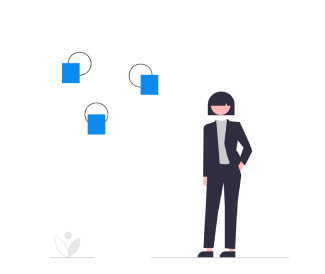What Is a Retention Bonus?
A retention bonus is a monetary reward given to an employee to motivate them to stay with a company for a predetermined amount of time. It is usually a lump-sum payment that becomes payable only if the employee stays until a predetermined date or milestone. Also referred to as an employee retention bonus, this type of compensation is commonly used during times of organizational change, such as mergers, acquisitions, leadership transitions, or project completions.
Retention bonuses are designed to minimize attrition, especially among high-performing or mission-critical talent. These payments are generally in addition to the employee's regular salary, benefits, and other variable pay.
Unlike annual bonuses or performance-linked incentives, a retention bonus is not tied to KPIs or goals but rather to the employee's continued association with the organization for a defined duration.
Why Do Companies Offer Retention Bonuses to Employees?
Companies typically use employee retention bonuses as a strategic tool to reduce the risk of losing key talent, especially when the organization is undergoing major transformations or facing external threats.
Here are the most common reasons companies offer retention bonuses:
Mergers and Acquisitions
During a merger or acquisition, uncertainty about job roles and future organizational structure may prompt employees to explore other opportunities. They are encouraged to stay until the transition stabilizes by a retention bonus.
Critical Project Completion
When employees are handling high-stakes or long-duration projects, companies may offer a retention bonus to ensure the team remains intact till the project is delivered successfully.
Leadership Changes
In times of leadership turnover, especially at the executive level, companies may offer retention bonuses to high-performing managers and department heads to ensure continuity and business stability.
Hard-to-Fill Roles
For niche roles or positions requiring rare skills, a retention bonus can help prevent costly turnover and minimize the time spent on rehiring.
Competitive Talent Market
In a hypercompetitive labor market, where companies aggressively poach experienced professionals, retention bonuses are used to reinforce employee loyalty and fend off counteroffers.
How Is a Retention Bonus Different from a Performance Bonus?
Although both involve monetary rewards, retention bonuses and performance bonuses differ in intent, conditions, and timing.
| Factor | Retention Bonus | Performance Bonus |
|---|---|---|
| Purpose | To retain employee until a specified future date | To reward achievements or exceedance of targets |
| Eligibility Criteria | Based on continued service | Based on performance metrics or goals |
| Timing of Payment | At end of defined retention period | At regular intervals (monthly/quarterly/yearly) |
| Nature of Bonus | One-time or milestone-based | Recurring or annual |
| Tax Treatment | Treated as part of income, subject to applicable TDS | Same as retention, taxable as salary income' |
While performance bonuses recognize excellence, retention bonuses reward commitment and continuity, two distinct but equally valuable workforce behaviors.
When Should HR Consider Offering a Retention Bonus?
HR professionals must evaluate both the cost and impact of retention bonuses before rolling them out. Here are some scenarios when offering a retention bonus payment is appropriate:
During Organisational Restructuring
If departments are being reshuffled or downsized, HR may offer retention bonuses to maintain critical staff during uncertain transitions.
For High-Performing Talent at Risk of Leaving
If top talent has received competing job offers or shown signs of disengagement, a retention bonus can help delay their exit while HR works on long-term engagement strategies.
To Ensure Project Continuity
When a project is at a crucial delivery stage, retaining technical and functional experts until project handover is essential for success.
In High Attrition Cycles
HR may deploy retention bonuses in phases or selectively in departments facing high attrition rates, especially in IT, consulting, and R&D teams.
When External Hiring is Costly or Time-Consuming
Retaining trained employees through short-term bonuses may be more cost-effective than rehiring and retraining new talent.
Are Retention Bonuses Effective in Reducing Employee Turnover?
The effectiveness of a retention bonus in curbing attrition depends on how well it aligns with the employee's values, the organizational culture, and the overall compensation strategy.
Advantages:
- Immediate impact: Employees are less likely to leave when a financial reward is linked to their continued stay.
- Talent stability: It helps prevent disruptions in business operations, especially during transitions.
- Motivational tool: It signals appreciation and can increase short-term engagement.
Limitations:
- Short-term effect: Once the bonus is paid, the employee may still leave if long-term needs aren't addressed.
- May create inequality: Offering bonuses to selected individuals can lead to resentment among other team members.
- Financial burden: High-value bonuses can strain payroll budgets, especially for startups or SMEs.
Thus, while retention bonuses can buy time, HR should always pair them with sustainable engagement and growth initiatives like clear career progression, learning opportunities, feedback systems, and inclusive workplace policies.
Want to make retention smarter and more strategic? Explore how Qandle's HRMS platform helps HR leaders track bonuses, monitor attrition trends, and retain top talent, all from a unified dashboard.
People also look for


 Back to Glossary
Back to Glossary